With one device you can sweep and mop the floor, and if necessary, wash it more thoroughly. Let's see who is this multi-tasker we have here...
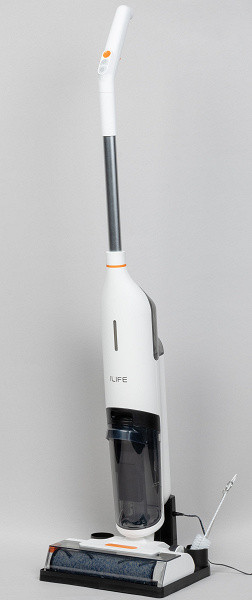
Yes, this is the iLife W90 washing cordless vacuum cleaner! Is it easy to achieve cleanliness with its help and how does the self-cleaning on the base work, we will find out and tell you.
Characteristics
| Manufacturer | iLife |
|---|---|
| Model | W90 |
| Type | washing cordless vacuum cleaner |
| Country of Origin | China |
| Guarantee | 1 year |
| Power | 150 W |
| Clean water tank capacity | 700 ml |
| Dirty water tank capacity | 500 ml |
| Battery | 3000 mAh |
| Charging time | up to 6.5 hours |
| DC Adapter | 28V, 0.6A |
| Weight | 4.3 kg |
| Dimensions (W×H×D) | 280×1193×255 mm |
| Length of network cable | 1.6 m |
Equipment
The vacuum cleaner comes in a large brown cardboard box. The front of the box shows the device itself and lists its key features. Among them are effective cleaning in 3-in-1 mode, one-touch self-cleaning function, voice assistant and convenient wireless design.
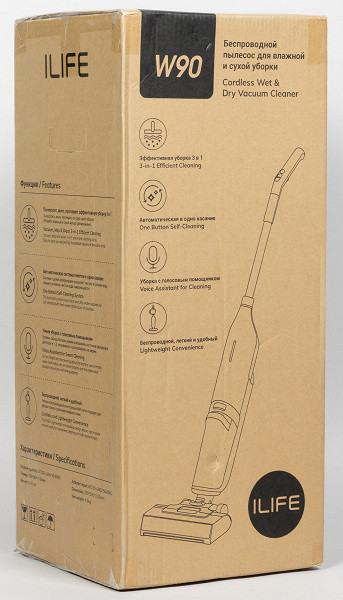
The sides of the box describe the mentioned features in more detail. For example, «3 in 1» cleaning means suction, washing and wiping. However, the Russian text has some inaccuracies, for example, the description of the self-cleaning function as «press the button, the water cleans itself» is not entirely clear.
When opening the box, we found the following items:
- the motor unit of the vacuum cleaner with tanks for clean and dirty water
- extension tube
- base stand for charging and self-cleaning the device
- brush for manual cleaning of the dust collector
- spare foam filter
- user manual
- service book
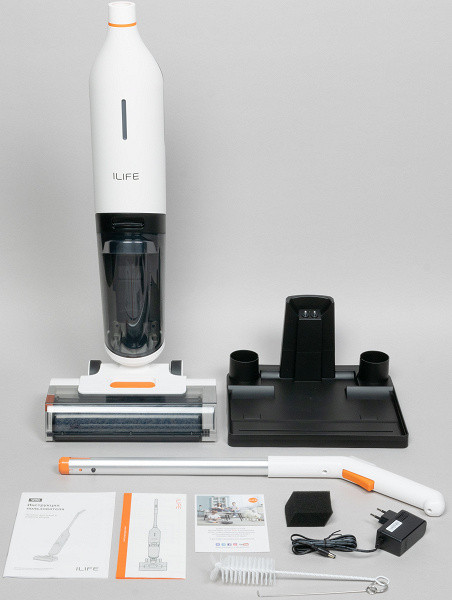
At first sight
The body of the vacuum cleaner is made of matte white plastic, pleasant to the touch, the tanks and the motor brush cover are dark, and the few decorative elements are bright orange.

The iLife W90 has a traditional design for cordless vacuum cleaners. The top of the cigar-shaped body houses a reservoir for clean water.
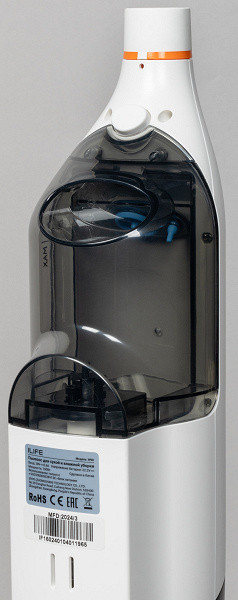
Its volume is 700 milliliters. It fits tightly into the socket on the body and is held in place by a massive rubber gasket.
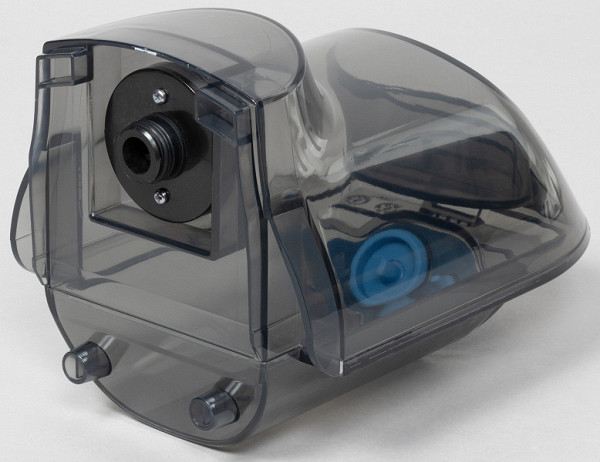
The filler neck is closed with a blue rubber plug. The tank body is equipped with small legs, allowing it to be placed vertically when servicing the device.
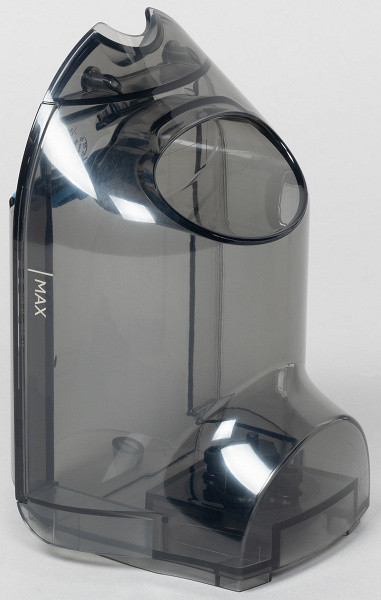
At the front of the tank there is a convenient handle that allows you to remove and carry the structure.
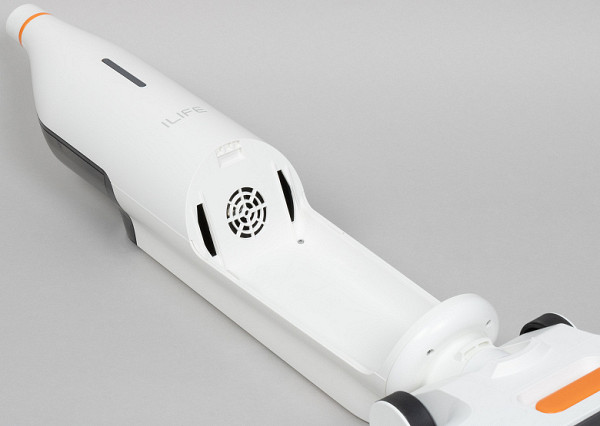
During cleaning, clean water is supplied to the rotating motor brush, washes it, moistening the floor, and then, together with dust and dirt, gets into the waste liquid tank.
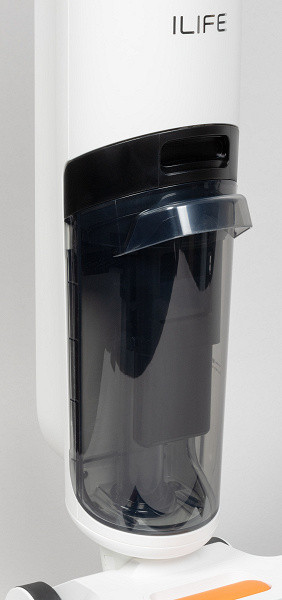
The water container with wet waste is located at the bottom of the motor block.
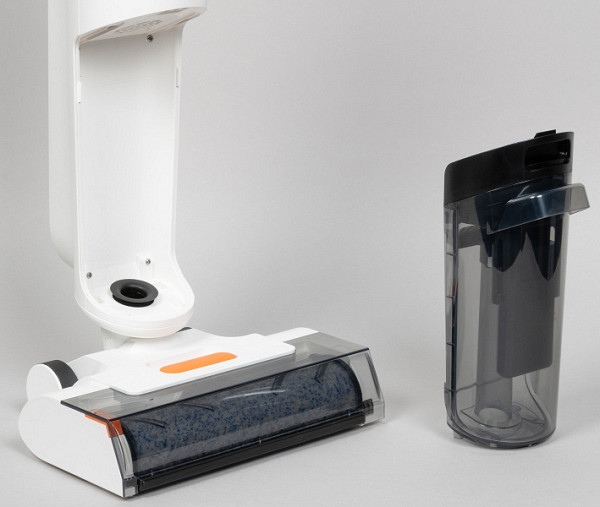
The structure is held in the housing by a plastic latch on the front side of the tank.
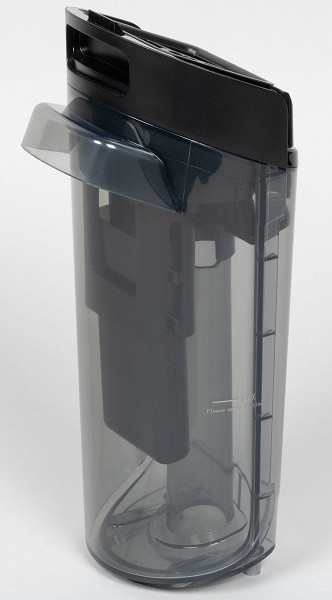
The module includes a water tank made of dark transparent plastic and a cover with a washable air filter. A float mechanism is used to control the liquid level, which informs the user about the overflow of the tank, instead of traditional electrical contacts.
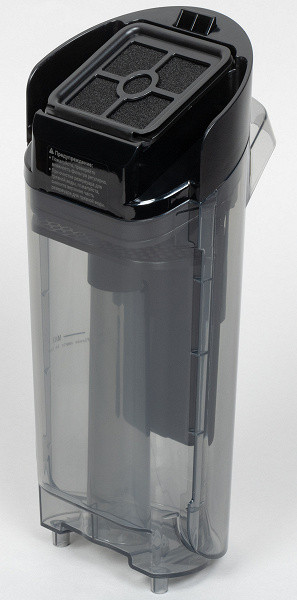
Inside the tank there is a removable grate separator. It is designed to separate large debris that can clog the sewer.
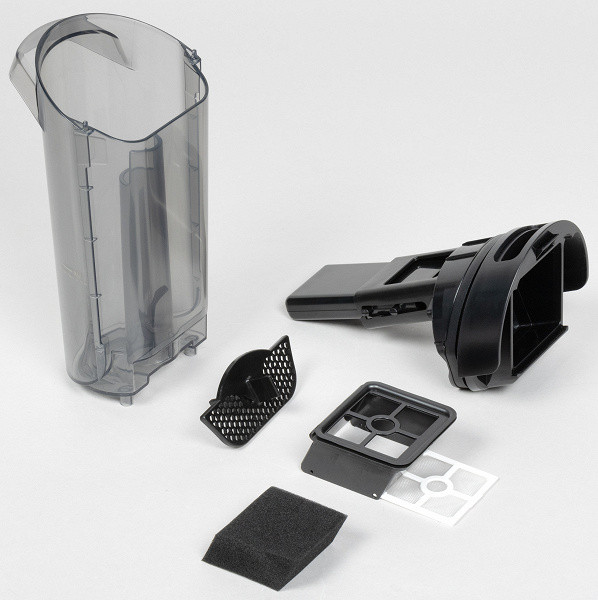
The washable filter is covered with a folding nylon mesh, which retains the fragments that have passed through the separator.
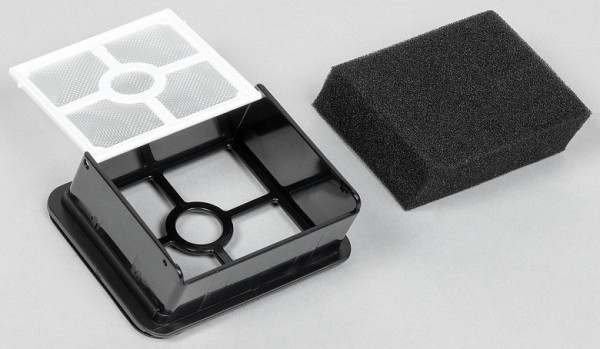
A rectangular foam element is responsible for final filtration; there are two of them in the iLife W90 kit.
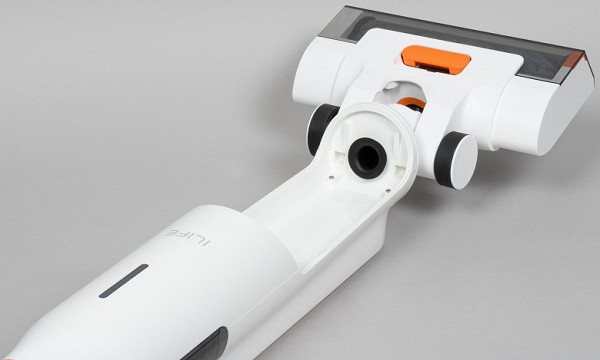
The floor cleaning brush is not detached from the motor unit. The vacuum cleaner uses two massive wheels with rubber protectors, which provide reliable grip on the surface. The hinged mount allows you to conveniently clean under furniture at a considerable depth.
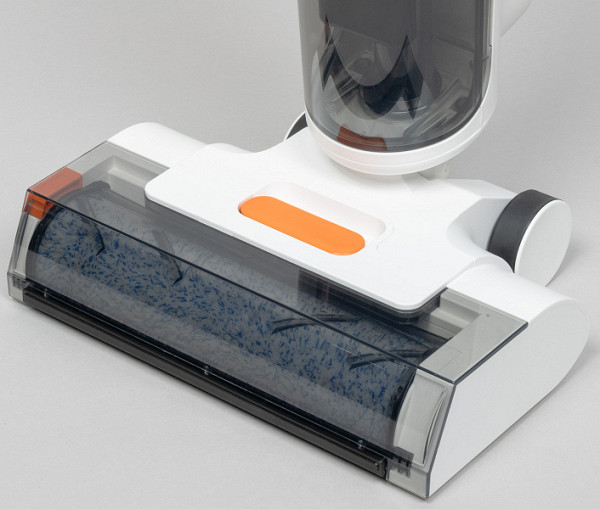
The electric brush is covered with a casing made of dark transparent plastic, allowing you to control the rotation of the rotor. This element is held in place by a latch with an orange button.
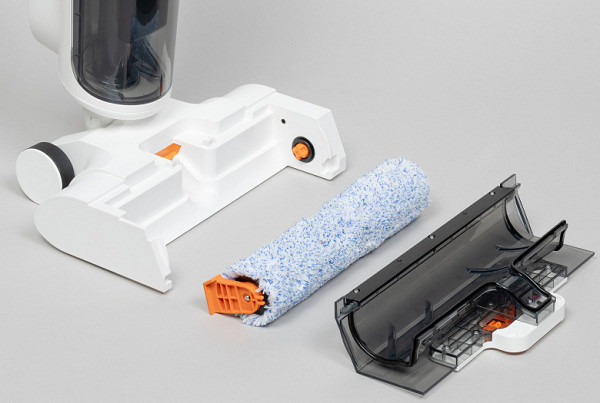
For cleaning, the rotor can be removed by removing the casing and pulling the orange fastener. There is no need to turn the heavy vacuum cleaner over during maintenance — all necessary manipulations can be carried out while the device is in an upright position.
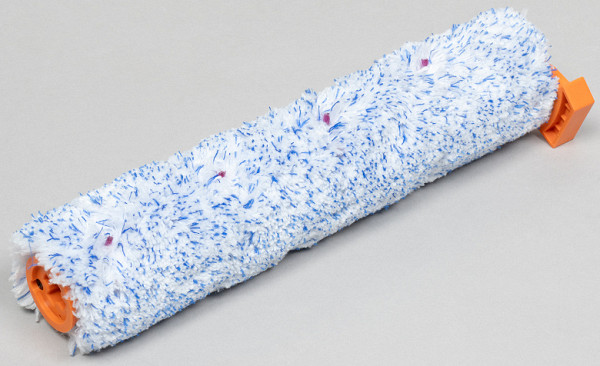
The soft synthetic bristles of the rotor have tufts of harder material protruding here and there, likely to improve cleaning efficiency on soft surfaces.
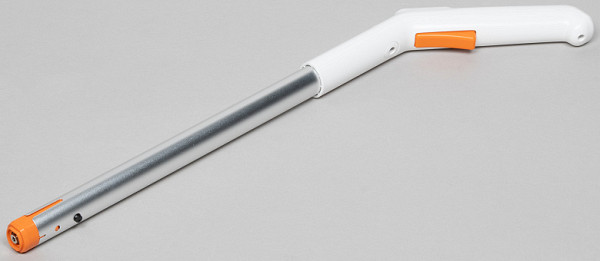
The metal extension tube is inserted into the top of the motor block.
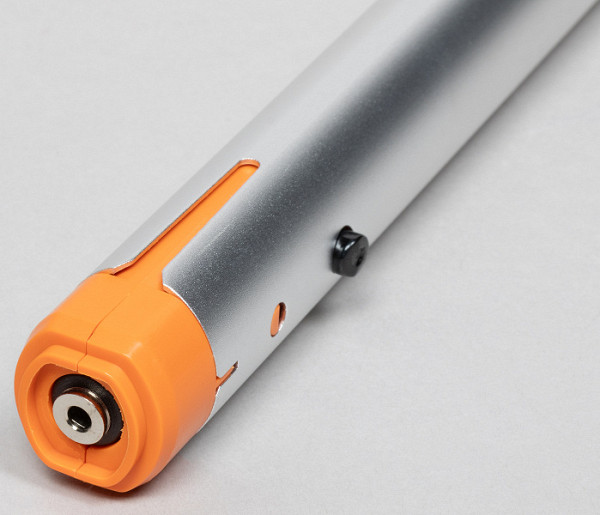
When assembling the vacuum cleaner, insert it into the body until it clicks. The internal latch is reliable, but to disassemble the vacuum cleaner before storing, you will need to use a thin, hard object, such as a chopstick, inserting it into a special hole on the body.
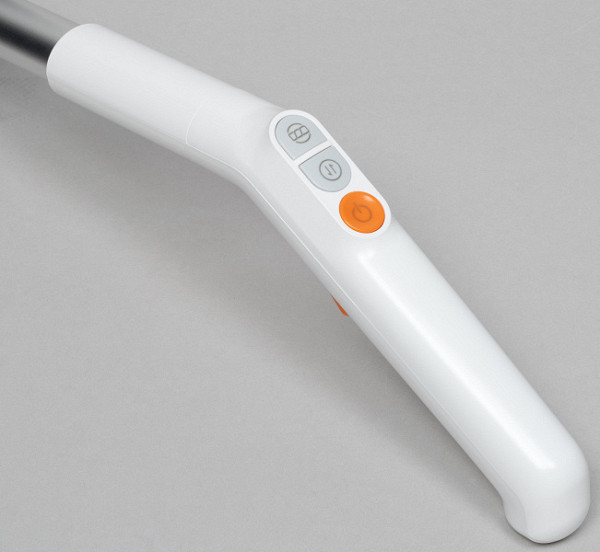
The controls are concentrated on the L-shaped handle. On the top side are mechanical buttons, and on the bottom is the water supply key.
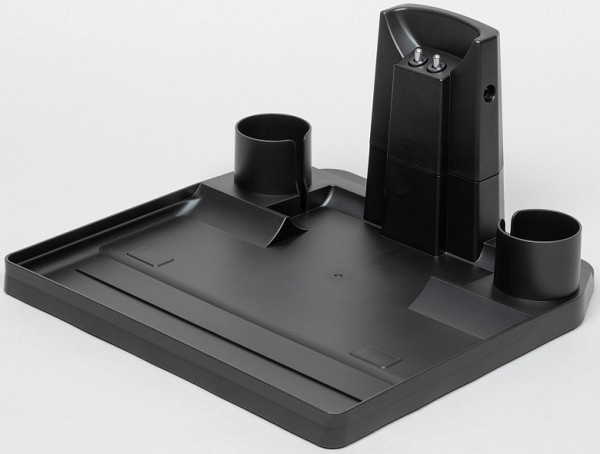
The base station is designed for self-cleaning of the vacuum cleaner, its charging and storage. On the flat part of the station there is a recess for collecting dirty water when washing the rotor, and on the vertical base there are two electrical contacts for connecting the vacuum cleaner to an alternating current source.
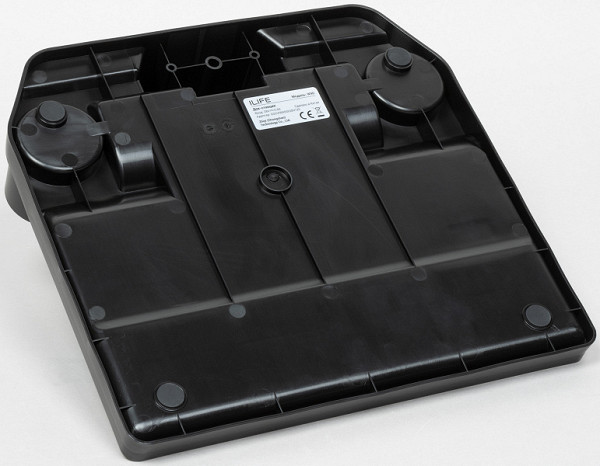
The base rests on four legs equipped with round anti-slip pads.
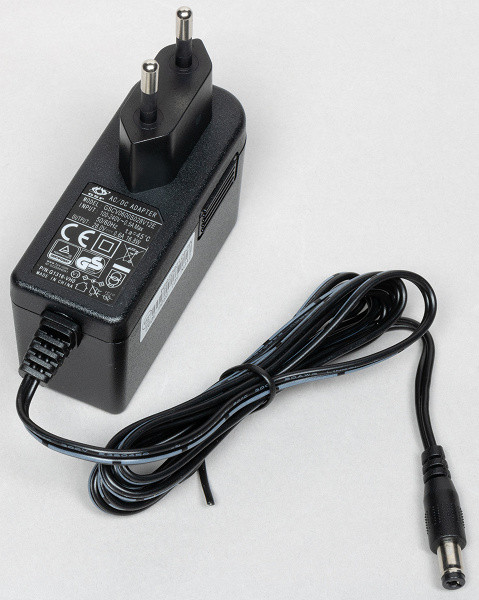
The power adapter is connected to the connector on the back of the charging station. According to the marking on the case, it supplies the device with a constant current of 28 V, 0.6 A.
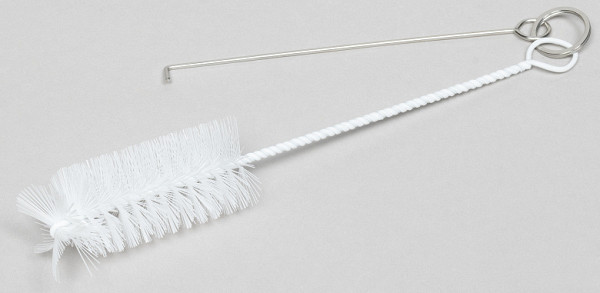
The vacuum cleaner also comes with a small brush for cleaning the dirty water tank and a metal hook: it is convenient to use it to remove large pieces of debris.

Instructions
The 14-page brochure is printed on medium-weight white paper. It is written in good Russian, and has no errors or typos like those we saw on the packaging.
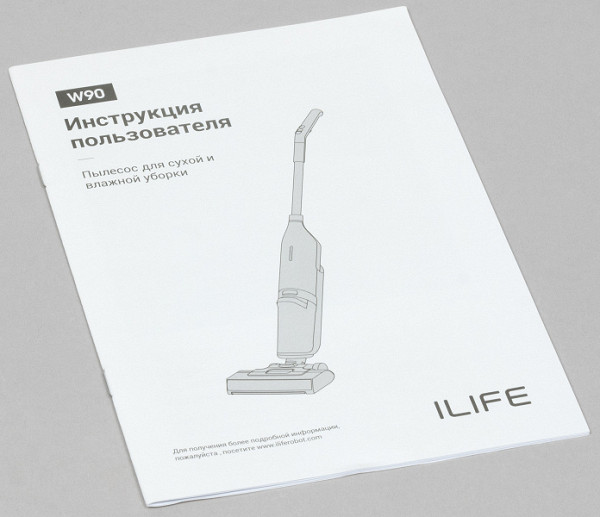
The document contains many clear and legible diagrams and drawings explaining the structure of the device, its operation and maintenance.
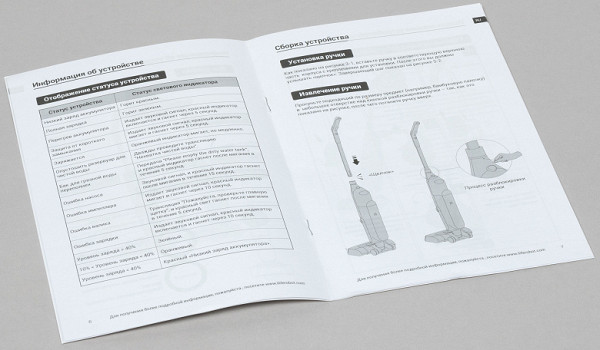
The kit also includes a service booklet, published in the form of a booklet, and a card with information on how to register on the official website and receive an extended manufacturer's warranty.
Control
All controls of the device are concentrated on the handle of the extension tube.
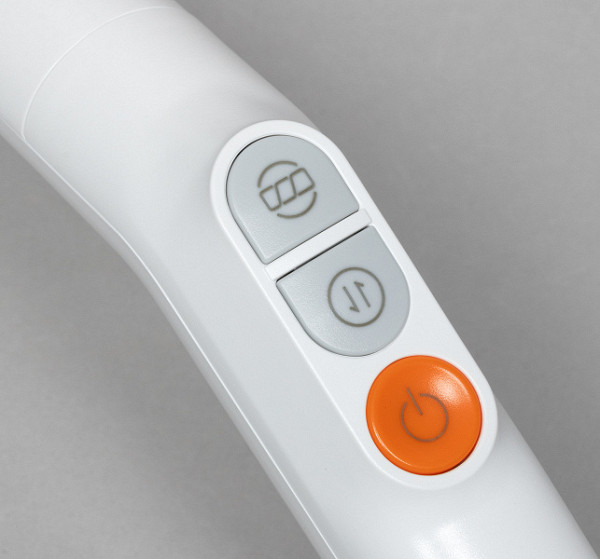
The vacuum cleaner is controlled by three buttons: the first turns the device on and off, the second switches power levels (low and high), and the third activates the self-cleaning mode on the base station.
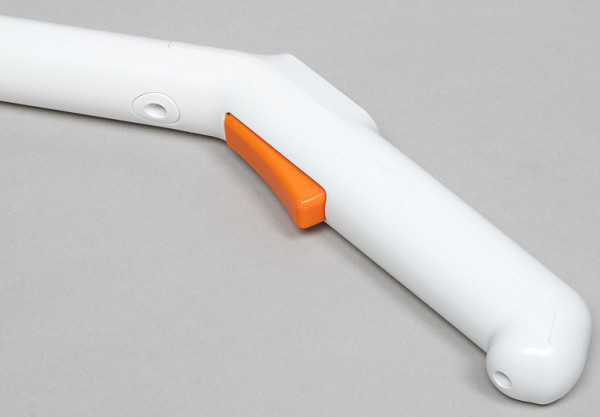
The orange button on the back of the handle regulates the water supply to the electric brush. In this model, the flow of liquid is controlled by the user, so that the floor covering is moistened only as needed.
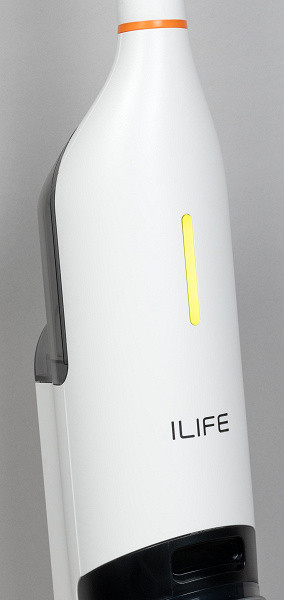
An oblong indicator on the front panel of the case shows the battery status: when the charge is above 40%, it lights up green; from 40% to 10% — orange; below 10% — red.
Exploitation
Before using the vacuum cleaner, unpack and assemble it by inserting the extension tube into the body until it clicks.
As with any battery-powered device, it is important to fully charge the iLife W90 before using it for the first time. The first charge may take longer, so we left the vacuum cleaner on the base overnight and started working the next morning.
In the vertical parking position, the vacuum cleaner is quite stable. However, to switch it to working mode, you need to apply force: to avoid tipping over, you need to hold the floor nozzle with your foot.
Before starting cleaning, check whether the clean water tank is full and whether the dirty water tank is empty. Even if you plan to only dry clean, this is important, since an empty water filter can reduce the efficiency of sweeping.
The iLife W90 voices every action: start, mode change, end of cleaning and setting to charge in a pleasant female voice without an accent. It also notifies you of problems: low battery, empty clean water tank, stuck brushes or overflowing dirty liquid tank. It seems that the voice assistant cannot be turned off.
The vacuum cleaner has two power modes: minimum and maximum. The voice assistant calls the first one «automatic», although in fact there is no automatic adjustment of power depending on the dirtiness of the surface. This may be a translation error of the interface.
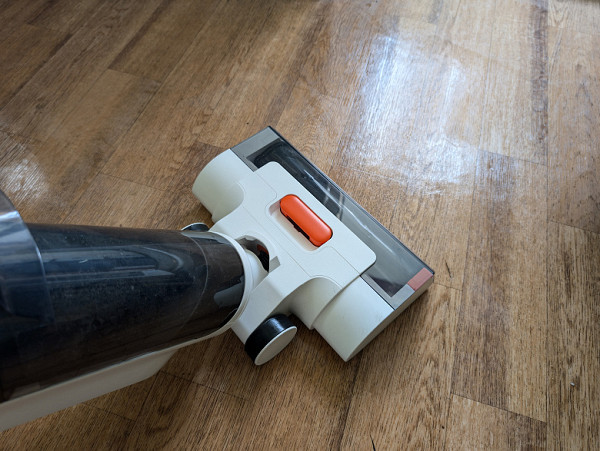
In the iLife W90, water is supplied manually: to activate the humidification of the rotary brush, you need to press the button on the control handle. This allows the user to effectively wash heavily soiled surfaces.
When the vacuum cleaner is returned to the base, self-cleaning does not start automatically and no reminders are activated about the need to do it. The user must start this process manually. To do this, empty the water filter container, rinse it, fill the clean water tank to the maximum mark and press the corresponding button on the device handle.
If the battery level is below 10%, self-cleaning will not start. In this case, the vacuum cleaner should be left on the base for half an hour before starting the procedure.
In self-cleaning mode, the vacuum cleaner washes the electric brush for a minute, changing its rotation speed and adjusting the suction power. After completing the process, do not forget to empty the dirty water tank and fill the clean water tank again.
The model does not have automatic brush drying: it is recommended to dry the rotor in an upright position, placing it in the groove on the base station.
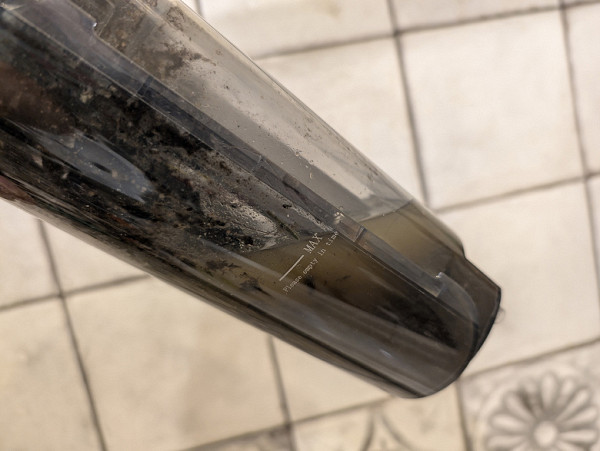
The liquid level in the aquafilter tank is clearly visible, but there is no need to monitor it: the device itself will inform the user when the tank overflow sensor is triggered.
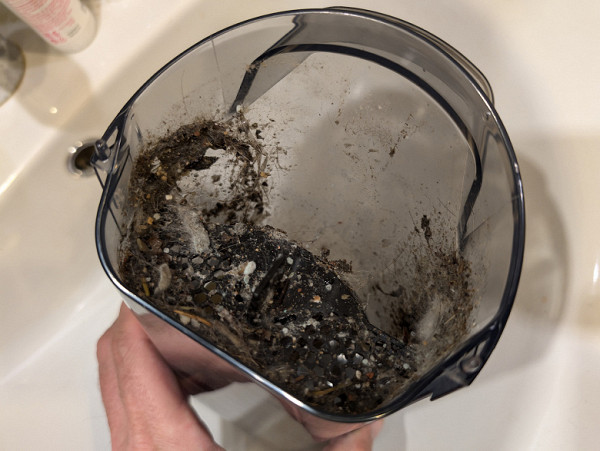
The mesh filter inside the tank traps large and medium-sized debris — after emptying the container, it can be thrown into the bucket without polluting the sewer.
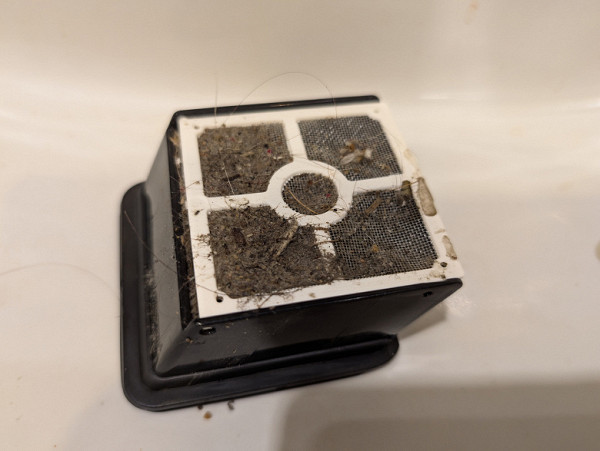
Some debris also remains on the washable mesh filter: it, like the foam sponge underneath, should be washed after each emptying of the tank.
Care
Maintenance of the vacuum cleaner includes regularly emptying the water filter container and starting self-cleaning after each cleaning.
The manufacturer also recommends monitoring the cleanliness of the filter and the roller of the electric brush: they must be washed under running water and dried before reinstallation.
The vacuum cleaner comes with only one roller brush. We could not find consumables for this model on the official website.
Our measurements
The vacuum cleaner weighs 4540 g with empty tanks. When the clean water tank is filled to the maximum (580 ml), the total weight of the device reaches 5120 g.
The average full charge time, tested over several cycles, was 4 hours 20 minutes. During this period, the device consumes about 0.080 kW h. The device adapter consumes up to 19.2 W during charging and less than 0.1 W in standby mode.
The noise level of the vacuum cleaner is approximately 76 dBA in any operating mode. The noise is uniform and even, without pronounced peaks and extraneous sounds.
The battery life is on average about 29 minutes in minimum mode and about 24 minutes in maximum mode, which is close to the declared characteristics.
Due to the design features, the suction power of this model was not measured.
conclusions
The iLife W90 cordless washing vacuum cleaner provides fast and effective wet cleaning, combining convenience and ease of use. With its help, daily maintenance of cleanliness becomes an easy and stress-free task.
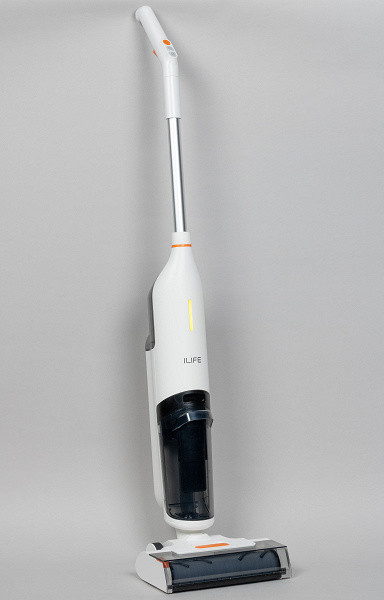
The vacuum cleaner effectively cleans both hard and soft surfaces, and one battery charge is enough for full regular cleaning.
Among the disadvantages, it is worth noting the non-disconnectable voice guidance and the difficulty in finding consumables: an additional roller brush could not be found on the manufacturer's official website.
Pros:
- excellent wet cleaning quality
- successful design of the dust container
- sufficient battery life
- relatively low noise level
Cons:
- non-disconnectable voice assistant
- unavailability of consumables on the official website
